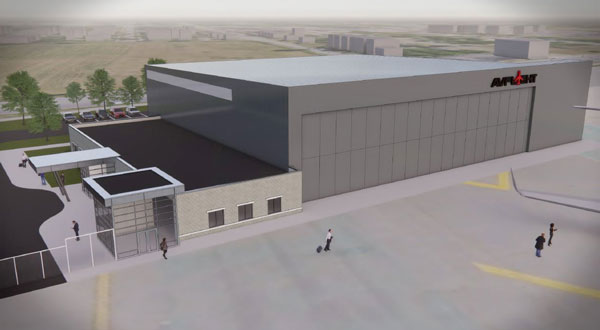Once the busiest airport in the world, Detroit’s municipal airport, named after former Mayor Coleman A. Young, is undergoing a multimillion-dollar upgrade to generate more commerce for the city.
The airport, nearing its 100th anniversary, in its heyday in the late 1920s and 30s, attracted numerous flights mainly because of Henry Ford’s breakout Trimotor aircraft, the “Tin Goose.”
“We were the busiest airport in the world from 1929 to 1934 and that’s because of the Ford Trimotor and people coming in and doing business with Ford,” airport director Jason Watt said.
The airport, located in the middle of the city and six miles from downtown, has had various roles over the years. From the 1980s through early 2000s it hosted commercial flights for Pro Air and Southwest Airlines. More recently it has had an increasing role as a general aviation airport serving corporate jets and hobby pilots. It also is a base for helicopter tours, city police aircraft and Airspace Experience Technologies, which builds electric vertical take-off and landing aircraft.
The airport recently signed a 30-year leasehold with Michigan-based Avflight, a fixed-base operator that handles airport services such as fuelling, hangars and ground handling. Avflight has more than a couple dozen contracts with airports mainly in North America including those in Winnipeg and Plattsburgh, N.Y. Avflight has been servicing the airport since 2011.
The new up to $8 million investment, financed by Avflight, will see construction of a new 5,000-square-foot terminal and a 15,000-square-foot heated hangar immediately next door. Avflight’s VP of finance Garrett Hain says the company in recent years has embarked on several airport expansion projects including at Harrisburg, Pa., Milwaukee, Wisc. and Grand Rapids, Mich.
“It’s become a pretty big piece of our business on the development side,” he said.

The airport has also applied for federal airport upgrade funds. Other recent improvements have seen a $3.5 million runway renovation and $350,000 LED taxi lighting upgrade. Upcoming will see $1.2 million in new ramp paving and $8.1 million for an engineered material arresting system, which uses crushable materials to prevent aircraft overruns similar to runaway truck ramps.
Hain said Avflight is proud to be part of airport improvements.
“There’s a lot of opportunity there to really grow the airport and increase business there.”
Watt says the airport’s growth is in tandem with the city’s revitalization.
“There’s a lot of demand in our region for private hangars and really with this resurgence of downtown it’s easy for businesspeople to get in and out of the city and that’s the primary service of the airport right now,” he said.
The airport’s central location and relatively small size allow private jets, including professionals and entertainers, to fly in and out of the city more easily.
But the largest aircraft it can handle is a Boeing 737.
“Our airport is actually designed for the Gulfstream V so that being said we’re not limited to that aircraft that’s just the primary aircraft that services our airport,” Watt said.
The airport also plays host to the Tuskegee Airport Museum and Davis Aerospace Technical High School, run by the Detroit Public Schools, which trains students for the aircraft industry including as pilots.
But, Watt said, “the airport has not been utilized to its maximum capacity and that’s why this whole revitalization, so we have world class amenities that the flying public wants and needs.”











Recent Comments